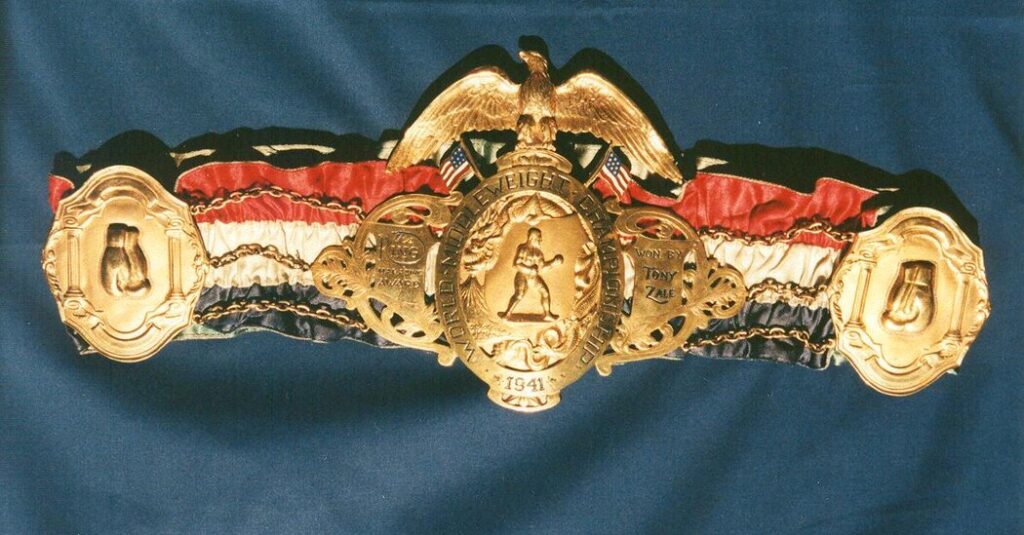For two decades, a crew from Lackawanna County in Pennsylvania traveled to a dozen small museums across the country, where its ringleader smashed through security systems to strip them of art and precious memorabilia.
Their loot included treasured heirlooms from America’s past, including nine of Yogi Berra’s World Series rings, two of middleweight Tony Zale’s championship belts and 30 golf and horse racing trophies. Instead of selling the memorabilia, they melted much of it down and sold it as raw metals.
On Friday, three men involved with the theft ring were convicted in U.S. District Court in Scranton for conspiracy to commit theft of major artwork.
The convictions followed testimony from the former ringleader of the group, Thomas Trotta, who pleaded guilty and became a central witness at the trial of the men, who had been his friends since his days at North Pocono Middle School. According to federal prosecutors, Mr. Trotta broke into the museums, while the other men assisted him by either planning the robberies, melting down the stolen items or transporting them to be sold in New York City.
The three defendants, Nicholas Dombek, Joseph Atsus and Damien Boland were also convicted of concealment and disposal of major artwork and interstate transportation of stolen property. Their sentencing has not been scheduled.
A fourth defendant, Alfred Atsus, was acquitted on all charges, and his brother, Joseph, and Mr. Dombek, were acquitted on several of the counts put forward by the prosecution.
Investigators said in a statement that they had recovered antique firearms that were stolen in two of the thefts, but “the whereabouts of many of the other paintings and stolen objects are currently unknown.” Among the missing works is a silk-screen by Andy Warhol stolen in 2005 from the Everhart Museum in Scranton.
Mr. Trotta and three other co-conspirators who have already pleaded guilty are also awaiting sentencing.
The defense had argued that Mr. Trotta lied in implicating the men as his accomplices. Matt Clemente, who represents Mr. Boland, told the jury that Mr. Trotta had made a “corrupt deal” with the prosecution.
After the verdict, Jason Mattioli, whose client, Alfred Atsus, was acquitted, said, “The only one that pointed the finger on my client was Mr. Trotta, and there was nothing to back it up.”
In his testimony, Mr. Trotta told the courtroom that he and his accomplices surveilled museums to detect security protocols and identify potential getaway spots, and then later he would break in with tools like an ax, center-punch or grinder.
“This was our life for 20 years,” Mr. Trotta said from the stand. “It was absolutely a lifestyle.”
The Everhart museum was one of their earliest targets, and Mr. Trotta said he had hoped to steal “Pink Shrimp,” a 1921 painting by Henri Matisse, from its collection. But the museum sold it before they arrived, Mr. Trotta said, so they focused instead on “Le Grande Passion” by Andy Warhol and “Springs Winter” attributed to Jackson Pollock.
Mr. Trotta said the opportunity to break into the museum surfaced one night two decades ago when the police were distracted by a brawl that broke out at a bar in Scranton. Mr. Trotta said at that point that he, Mr. Boland and Joseph Atsus drove to the museum, where he used a ladder to smash the rear entrance of the museum and grab the paintings.
The World Series rings were stolen from the Yogi Berra Museum & Learning Center in Little Falls, N.J. Mr. Trotta testified that he and an accomplice barely escaped before the police arrived and that later he brought the rings to Mr. Dombek, who pried the gems off and melted down the rings in his garage. Mr. Trotta said they garnered about $2,000 from the gems and no more than $15,000 from the metal when they sold them to a contact in New York City.
Lindsay Berra, Yogi Berra’s granddaughter, said that though she was happy with the verdict, she still felt grief over the loss of the rings.
“I keep thinking about just how senseless it was that all this stuff was melted and sold for pennies on the dollar,” Ms. Berra said. “That will still never make sense even with this closure from the trial.”
Tony’s Zale’s boxing belts, taken in 2015 from the International Boxing Hall of Fame in Canastota, N.Y, were also melted down. His great-niece, Haley Zale, who tracked the case from the courtroom, said it was gratifying that those responsible were convicted, but still sad to hear Mr. Trotta testify about destroying such historic artifacts for scrap metal.
“It’s closure that the belts will never be recovered, that I’ll never see them again,” she said after the verdict. “It just solidified that it’s time to move on. The whole experience was heartbreaking.”
The crew’s downfall began in 2019 when state police in Pennsylvania pulled over a maroon Pontiac that was swerving. Mr. Trotta was arrested for driving under the influence. In the car, the police found bolt cutters, a sledgehammer, headlamps, ski masks, gloves and several phones. Investigators then traced DNA from a cup of water Mr. Trotta drank from while in custody and matched it to DNA found at several burglaries.
“I got sloppy,” he said during the trial.
Soon, Mr. Trotta was cooperating with law enforcement and wore a wire to record conversations with others in the ring, including Mr. Dombek, who, as a teenager, had lived in Mr. Trotta’s home and dated his sister, Dawn. Mr. Trotta had fished and hunted with the Atsus brothers, and they were the godfathers of his children, Mr. Trotta said from the stand.
“I’m sure they don’t like me now,” he testified.


